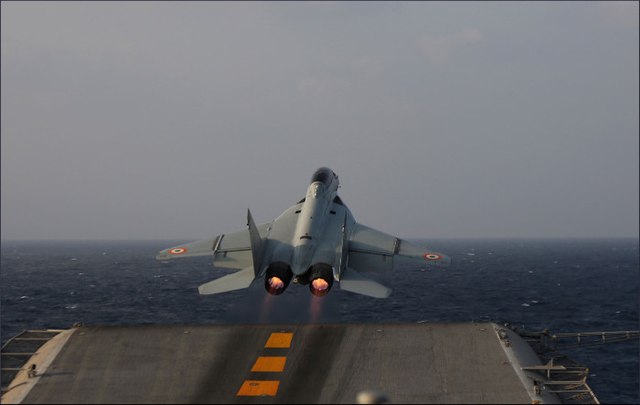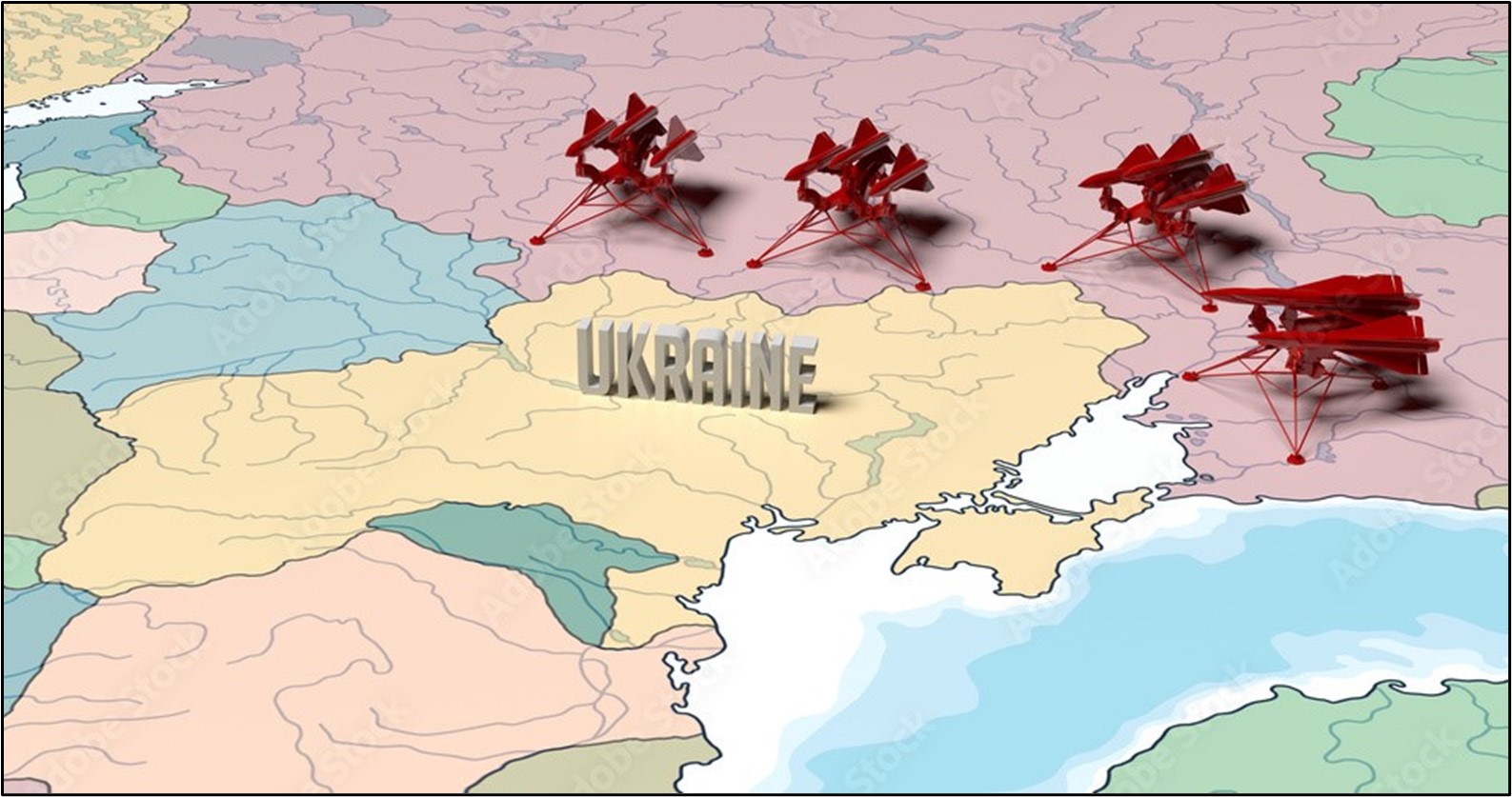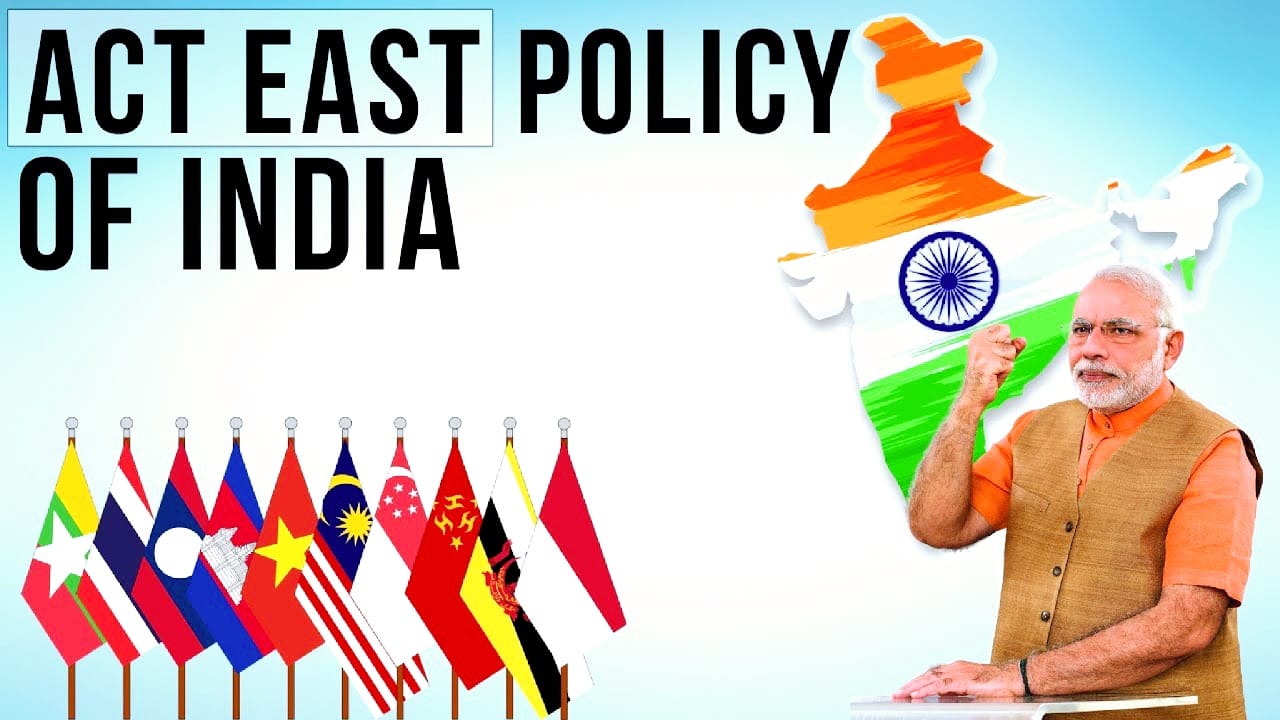
China’s Growing Defence Exports – Implications & Options For India

The conflict in Ukraine will have a huge impact on global arms trade. Russia would have consumed a large amount of weapons and would need to replenish them. In view of the growing NATO threat, they would have to increase their inventories. The NATO itself has got galvanised and many members are talking of increased defence budgets. Even relatively neutral countries like Sweden, Finland and Switzerland want to arm themselves more. Most of these countries will source their arms from the U.S. and from other allies. Ukraine, an important source for aircraft engines and the Antonov aircraft and some other defence equipment will dry up because the factories are getting destroyed. Russian would try make good these markets. Many West Asian and South East Asian countries are also looking to strengthen their armed forces.
China has emerged as supplier of weapon platforms to over 50 countries. Three of the world’s top 10 arms companies are Chinese. It is the world’s fifth largest weapons exporter. Its main customers are relatively poor countries in South and East Asia, Africa, and Latin America. In each case the sales are linked to lower costs, sometimes cheap loans, and political leveraging. The intention is to initially establish a foothold in the local defence market. China is launching home-designed aircraft carriers and conducting research in quantum-technology communications. Chinese Unmanned Aerial Vehicles (UAV), or drones, are being extensively used in conflicts in both Libya and Yemen. Chinese arms companies are also benefiting from military modernization programmes for the People’s Liberation Army. China has just raised its defence budget for 2022 by 7.1% to $230 billion from last year’s $209 billion.
Chinese Arms Industry
As per Stockholm International Peace Research Institute (SIPRI) report released in December 2021, the combined arms sales of the five Chinese companies included in the Top 100 amounted to an estimated $66.8 billion in 2020, 1.5 per cent more than in 2019. Chinese firms accounted for 13 per cent of total Top 100 arms sales in 2020, behind US companies and ahead of companies from the United Kingdom, which made up the third largest share. They have become some of the most advanced military technology producers in the world.
The China North Industries Group Corporation (NORINCO), for example, co-developed the BeiDou military–civil navigation satellite system and deepened its involvement in emerging technologies. Five Chinese companies, are in the top 25 global arms companies. The China North Industries Group Corporation (NORINCO; ranked 7th), Aviation Industry Corporation of China (AVIC; ranked 8th), China Electronics Technology Group Corporation (CETC; ranked 9th), and China South Industries Group Corporation (CSGC; ranked 20th). These five’s combined estimated arms sales totalled $66.5 billion. Although Chinese arms are often less advanced than those sold by other countries, but they are effective and less expensive.
China Emerges as a Significant Arms Exporter
Besides armed drones, China is exporting fighter aircrafts, missiles, small arms and even ships and submarines. SIPRI data shows that China was the world’s fifth largest arms exporter in 2016-20, and accounted for 5.2 per cent of the total global arms exports. The lion’s share of these exports, around 75 percent – went to Asia. 20 percent flowed into Africa. The overall value of its trade still pales in comparison to the United States, whose exports averaged over $9 billion annually during the last ten years. Pakistan is the destination for over 50 percent of Chinese exports. Defence exports to Bangladesh, Myanmar, and Sri Lanka are also of concern to India.
Filling the Gap Left by USA
Beijing has also been quick to concentrate on emerging technologies. This has enabled it to fill the void left by other suppliers. The U.S. has put restrictions on sale of many high-end equipment, including UAVs. China has made its UAVs available to countries such as the Pakistan, UAE, Saudi Arabia, and Egypt, among others. Serbia’s acquisition of the CASC CH-92 Wing long armed drones made it the first European state to deploy Chinese combat drones, reflecting Belgrade’s deepening relationship with Beijing. China has traditionally supplied weapons to countries that are on the United Nation’s bad books. Great targets for China are countries that are abandoned by USA for political reasons, such as Venezuela and Bolivia. Venezuela bought the K-8 trainers and air search radars in 2008. They later bought transport aircraft, armoured personnel carriers and self-propelled artillery. Others include “rogue states” such as North Korea and Iran. Chinese weapons have also found their way into various conflict zones.
Chinese Arms Market– Africa
The increasing Chinese arms sales throughout Africa is in sync with its ever-increasing number of UN peacekeeping deployments in Africa. It is also building infrastructure in Africa at knock-down prices. The Chinese-Pakistani made K-8 Karakorum jet trainer is now in service with Egypt, Ghana, Zambia, Zimbabwe, Namibia, and Sudan. China claims with pride that K-8s comprise 80% of the jet trainer aircrafts in Africa. The K-8 is particularly notable due to the ease with which it can be converted to light-attack role aircraft for counterinsurgency operations. China is trying to strengthen its foothold in Algeria. The sales include C-28A frigates. China has sold offshore patrol vessels and other complex naval vessels to Algeria, Nigeria, Angola, Ghana, and Cameroon. Nigeria has just received the initial three JF-17 fighter jets.
Chinese arms have been used during conflicts in the Democratic Republic of Congo, Côte d’Ivoire, Sudan, and Somalia. In July 2014, NORINCO delivered 100 guided missile systems, over 9,000 automatic rifles, and 24 million rounds of ammunition to the South Sudanese government, whose actions have been widely criticized by the international community. China has also built a large maintenance base in Africa. There is a naval base in Djibouti, and aircraft maintenance and training facilities in Tanzania and the Republic of Congo. 66% of African nations currently utilize arms made by China.
Chinese Arms Trade – Europe
Nearly 99 percent of China’s arms imports ($14.4 billion) come from Europe. The arms exports to Europe are an insignificant $17 million. The SIPRI report estimates from 2016 to 2020, 77 per cent of China’s total arms imports were from Russia, 9.7 percent from France and 6.3 percent from Ukraine. Aircraft engines are the main import, as China has not yet been successful in producing aircraft engines. Between 2012 and 2019, China purchased over 420 aircraft engines from Russia, and just 24 Sukhoi Su-35 fighter aircrafts, and of course the S-400 Air Defence systems. Ukraine also provided China with aircraft and tank engines and some refurbished IL-78 air-refuelling planes. A sizable portion of China’s orders from France are also for aircraft and marine engines.
Arms Sales in Asia
82.8 percent of Chinese arms are in Asia. 61.3 percent of China’s conventional weapons sales since 2008 have been to Pakistan, Bangladesh, and Myanmar. Chinese arms sales across South and Southeast Asia are still insignificant compared to the United States. China’s military sales to Pakistan are tied to political objectives. The co-developed JF-17 aircraft and China’s ongoing construction of the Type 054AP class warship for the Pakistani Navy, are significant. China will supply eight Hangor-class submarines, of these, four submarines will be constructed in China while the other four will be built in Pakistan.
Between 2008 and 2018, China sold $1.93 billion of weapons to Bangladesh. This constitutes 71.8 percent of Bangladesh’s military acquisitions over this period, making China the biggest supplier of arms to Dhaka. China supports these procurements by offering debt. Bangladesh’s entire tank fleet is of Chinese origin. Similarly, many rifles, artillery, air defence weapons, naval equipment, including submarines are sourced from China.
Myanmar is the third largest market for Chinese arms exports in Asia. They buy small weapons, tanks, artillery pieces and air defence guns. It also acquired 17 JF-17 Chinese origin aircraft from Pakistan along with 12 Rainbow UAVs, two Type 43 frigates, and 76 Type-92 armoured vehicles. Sri Lanka operates Chinese tanks, armoured personal carriers (APC), and artillery and air defence equipment for its Army. Its Navy operates a frigate and Shanghai class naval vessels. Its air force still operates old vintage Chinese origin combat and trainer aircraft. Currently, Nepal operates limited Chinese origin military equipment comprising a few APCs and rifles.
Chinese Arms in Pakistan Inventory
Pakistan Army’s almost entire armoured fleet comprises of Al Khalid, Al Zarar, T-85 and T-69 series of Chinese manufactured tanks. Pakistan Heavy Industries Taxila (HIT) has set up a production line in collaboration with China’s NORINCO to manufacture the Al Khalid tank which has also been exported to Bangladesh. Practically all Pakistani Army artillery guns are made in China. Significant number air defence missiles are from China.
Nearly 130, ‘designed by China for Pakistan’ Fighter JF-17 ‘Thunder’ are in service with PAF. These numbers will increase to 300 later. PAF has 6 ZDK-03 Chinese AWACS, 60 Chinese designed K-8 Karakorum intermediate jet trainers, and four CH-4 Recce-cum-strike drones (4 PGMs) are in PAF service. PAF has bought Chinese SD-10 (ShanDian-10) radar-guided, mid-range homing air-to-air missiles to equip the JF-17 fighters. China has transferred 34 M-11, road-mobile, short range ballistic missiles (SRBM) with related technology, and manufacturing capability to Pakistan.
China continues to support Pakistan’s strategic missile program comprising Hatf, Shaheen and Anza. It has been supporting the ostensibly civil nuclear program. Pakistan has nearly 160 nuclear warheads as on date. China has supplied Burraq and Shahpar series UAV to Pakistan, and plans to allow license production of Wing Loong UAVs.
China’s Modus Operandi in India’s Neighbourhood
China is now the largest overseas investor in the Maldives, Pakistan, and Sri Lanka. Chinese investment is concentrated in hard infrastructure related to power, roads, railways, bridges, ports and airports. Beijing has taken stakes in the Dhaka and Karachi stock exchanges and cultivated trade in Yuan between China and Pakistan. China is accused of extending excessive credit with the intention of extracting economic or political concessions when countries cannot honour their debts particularly through the Belt and Road Initiative (BRI). This increased backdoor influence could be a strategic disadvantage for India.
Such fears were amplified after Sri Lanka had to lease out its Hambantota Port to China for 99 years, after being unable to service its debt. Similarly, Pakistan has leased the Gwadar port to China. Strategic experts warn of a Chinese hand behind the strain in India-Nepal ties. Several South Asian countries seem enamoured by Chinese “generosity”, which India is unable to match. By 2018, China’s total trade with Maldives slightly exceeded that of India. China’s trade with Bangladesh is now about twice that of India. China’s trade with Nepal and Sri Lanka still lags India’s trade with those countries but the gap has shrunk. Beijing is helping strengthen the navies of Pakistan, Bangladesh, and Sri Lanka to enhance its footprint in the Bay of Bengal and the Indian Ocean. Other than Pakistan who is leaning on China as a low-cost option to neutralise more powerful India, most other countries are learning to play India and China against each other which gives them greater leverage.
India’s Make in India Initiatives
India is among the top five countries in military spending. It has the second-largest standing army in the world. As per the Union Budget for the financial year 2022-23, the total allocation for Defence is around Rs 5.25 lakh crore ($70.23 billion). The capital outlay was Rs 1.52 lakh crore ($20.33 billion) for new acquisitions. This is 28 percent of the total budget. Modern armed forces spend close to 50 percent. Even manpower-intensive China spends close to 35 percent of the budget on Capital acquisitions. India’s defence exports in 2020-21 were Rs 8,434.84 crore ($1.1 billion). There is a determined push to achieve defence exports of $5 billion. Make-in-India ‘Atmanirbharta’ plan is unfolding well now, and the Defence budget was indigenisation supportive. It will help in building domestic capabilities, and also bolster exports in the long term.
India’s Defence Export Potential
In a major boost to its defence export plans, India has signed a $375 million deal to export the BrahMos supersonic cruise missile to the Philippines. Vietnam and Indonesia, who remain interested are waiting in the wings. Among the other potential buyers are South Africa, Kenya, the UAE, Oman, Brazil, Malaysia, and Chile. Over 30 Indian defence companies have exported arms and equipment to countries like Italy, Maldives, Sri Lanka, Russia, France, Nepal, Mauritius, Sri Lanka, Israel, Egypt, UAE, Bhutan, Ethiopia, Saudi Arabia, Philippines, Poland, Spain and Chile. The exports include personal protective items, defence electronics systems, engineering mechanical equipment, offshore patrol vessels, advanced light helicopters, avionics suits, radio systems and radar systems. In March 2020, Bharat Electronics Ltd (BEL) bagged a $30 million dollar order to sell four Swathi Weapon Locating Radars to Armenia.
India has been looking at LCA ‘Tejas’ exports at Rs 309 crore per aircraft. Akash air defence system is another contender. Light arms also have a huge market that India can exploit. There is a great market for unmanned aerial systems (UAS), and private sector is investing big. India’s private sector is already exporting a large number of smaller defence components, and also defence related software solutions. This gives great hope for India to develop Artificial Intelligence (AI) solutions.
India’s defence export strategy would have to balance China in the Indian Ocean Region. China has the economic might to sell arms cheaper. Their production scales would have to be matched. India has the advantage of endearing the smaller nations with no strings attached approach. India being a democracy makes it easier to deal with. Over dependence on China could be detrimental to smaller Asian nations. India must use this to its advantage. Time has perhaps come for India to have a dedicated defence export department. As China uses arms sales along with BRI as another tool to encircle and weaken India, it is time for India to get going.
***************
Disclaimer
The opinions expressed in this article are the author’s own and do not reflect the views of Chanakya Forum. All information provided in this article including timeliness, completeness, accuracy, suitability or validity of information referenced therein, is the sole responsibility of the author. www.chanakyaforum.com does not assume any responsibility for the same.
Chanakya Forum is now on . Click here to join our channel (@ChanakyaForum) and stay updated with the latest headlines and articles.
Important
We work round the clock to bring you the finest articles and updates from around the world. There is a team that works tirelessly to ensure that you have a seamless reading experience. But all this costs money. Please support us so that we keep doing what we do best. Happy Reading
Support Us





















POST COMMENTS (2)
China’s Growing Defence Exports – Implications & Options For India - The Real Kashmir News
Kalidan Singh